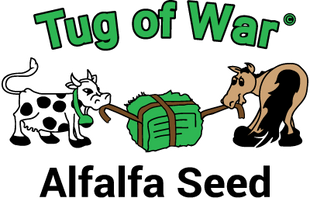Description
Get Annual Rye for $0.99 per pound!
Annual Rye is a very rapidly established grass seed that gives high productivity in the planting season. Annual Rye is primarily used for pastures and quick cover in erosion control plantings. In the South, it is used as a winter annual for overseeding warm season grasses. Annual Rye is a great choice for overseeding warm season pastures. Rye is best suited for grazing and/or harvest as a silage option.
Planting Depth: .25”-.5”
Planting Rates: 30-40 lbs per acre, 35 lbs per acre in standing corn, <20% overall in mixes
Planting Dates: Mar-May, Aug-Oct, Min 40 days before killing frost
*Product ships in 50 pound bag
Establishment
Annual Rye should be planted in a well prepared seedbed. Rye establishes very quickly and has an amazing root system. These qualities allow Rye to add 5,000-9,000 lbs of organic material per acre with roots down to 32” below the soil. In general, the annual ryegrass component of a mix should be 20% or less since it is very competitive, due to rapid germination and good seedling vigor.
Adaptation
Italian Ryegrass has a wide range of adaptability to soils, but thrive best on fertile soils with a pH between 5.5 and 6.5. Rye tends to produce well in regions having mild climates, however it does not withstand hot, dry weather or severe winters. Rye will stand fairly wet soils with reasonably good surface drainage.
Management
Annual ryegrass has extremely fast emergence and establishes quickly on a variety of soil types. It works well alone or in mixes. In severe winter conditions, annual ryegrass can winter kill, but roots have usually grown down 24-32 inches, leaving leftover nutrients and providing a good start for the following crop. Incorporation will work to kill ryegrass if it is completely covered. If using glyphosate, apply a full rate when the days are warm, averaging over 50°F and the grass is growing vigorously. If using for hay, cut when the seed heads begin to emerge. Rotational grazing is appropriate when spring growth is 3”-6” high. One should allow 7”-10” of regrowth between grazing periods to allow better yield and stand persistence. For 1st year seedings grazing should be delayed until plants are 10”-12” tall. Fertilizer applications should be based off of an independent soil test.
Description
Annual ryegrass is quite similar to perennial ryegrass except it is an annual or biennial, depending on climate and/or length or growing season. It may grow a little taller than perennial ryegrass, from 2 to 3 feet tall. Annual ryegrass is a bunchgrass, with numerous long, narrow, stiff leaves near the base of the plant. The under surfaces of leaves are bright, glossy and smooth. Inflorescence stems are nearly naked. There are approximately 227,000 seeds per pound.
Shipping
Payment & Security
Your payment information is processed securely. We do not store credit card details nor have access to your credit card information.


